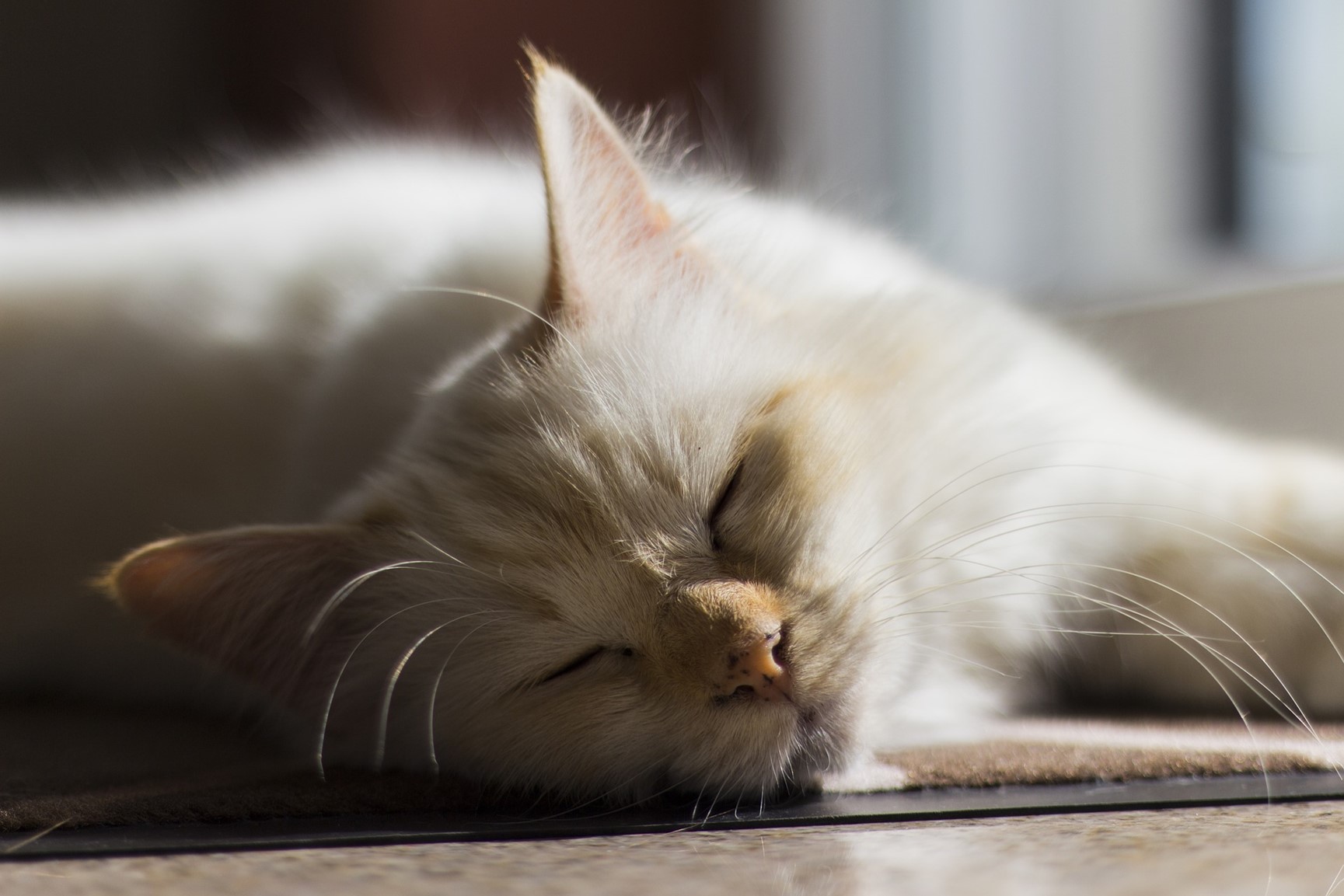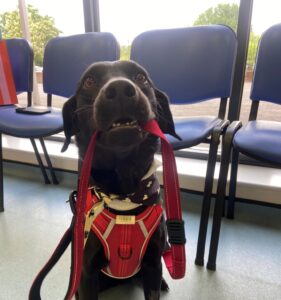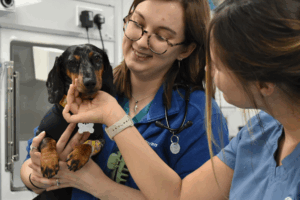Summer is well and truly here but it brings with it some potential hazards for our pets. Read on to find out how to make sure your pets enjoy summer as much as you!
Hot Weather
While the British summer cannot always be relied upon to be tropical, when the temperature does go up it’s important that we consider how this affects our furry friends.
NEVER leave pets in cars, conservatories, outbuildings or caravans on a warm day – even for a short while. When it’s 22°C outside, temperatures can quickly rise to 47°C (117°F) in these environments which can result in death.
Keep Them Hydrated
It is really important that your pets have a constant supply of fresh, clean water throughout the day. Here are some ways to make sure they’re getting enough water:
- Give their water bowl a good clean once a day. This will stop any bacteria from growing and will make sure the water is fresh and tempting.
- If your pet is reluctant to drink from their bowl, try changing it for a different one or even try a pet fountain – some pets prefer to drink flowing water.
- Try raising their water bowl off the floor so they don’t have to bend down to have a good drink. This is especially helpful if your pet suffers from stiffness or arthritis.
- Make sure your pet has access to water in a few places around your home and garden – that way they’ll never be too far from a drink.
Treats to cool your pets in the heat.
- Hot cats may well enjoy their favourite wet food frozen (smooth works best).
- Try freezing the fresh spring water from a tin of tuna (not oil or brine) then place a cube in a dish for a cool treat for your cat.
- If you’re going to be out all day, freeze some water the night before and then place it next to your pets’ regular bowl. As the ice melts, your pet will have a second bowl of cool water.
Sun Safety
The best way to protect your pet is to keep them out of the sun when it’s at its strongest.
- Avoid walking dogs in the middle of the day when pavements are at their hottest.
- Make sure your pets always have access to shade. Trees and shrubs make great shade for garden-loving dogs and cats. A blanket draped over the corner of their run can offer up shade to small pets like rabbits and guinea pigs.
- Use a pet safe sun cream on sun sensitive areas, like your pet’s ears and nose. Remember to reapply it throughout the day.
- Many dogs will appreciate a paddling pool or sprinkler to play in on a hot day.
- A cool, wet towel can be a welcome place to rest when your pet needs a break from the heat.
Summer Allergies
Pets can suffer from pollen allergies just like we do! A high pollen count in spring or summer can mean misery for pets suffering from hay fever. Here are the symptoms to look out for:
- Tiredness or lethargy, particularly on days with a high pollen count.
- Excessive scratching
- Red and sore looking skin, especially around eyes, ears and between paws
- Shaking their head and rubbing their ears or muzzle
It can sometimes be difficult to find out what’s causing your pet’s allergy but if it’s worse in summer and better in winter, pollen is the most likely culprit.
How to help your allergic pet
You can’t keep your pet indoors for months on end if pollen allergies strike. So what can you do during those months your pet is affected by allergies?
- Speak to your vet about medication that may help relieve the symptoms.
- Plan walks for before dawn, late afternoon or early evening. The pollen count isusually lower at these times.
- Keep dogs on a lead near grass. A quick roll in the grass can leave their fur covered in pollen, causing hours or even days of misery.
- Wipe paws and muzzles after every walk. Sensitive baby wipes or specialist pet wipes are ideal for this. If your dog is really sensitive you may want to rinse them with water or even shampoo, after walks.
- Keep up with grooming. A good daily brushing might help to remove any pollen that is clinging to fur. Keeping long-haired dogs’ fur trimmed short could help reduce pollen problems and will keep them cool in hot weather, too.
- A weekly bath can help to get rid of any lingering pollen.
- Bedding that your dog uses will need to be washed regularly otherwise your dog will end up covered in pollen again after every sleep.
Summer Food
When the temperatures rise, the lure of the barbecue is irresistible. Here are some tips for making sure your BBQ is safe and fun for your pet too:
- Don’t be tempted to give your pets tidbits. Eating barbecue scraps can upset your pet’s stomach. Undercooked or fatty food can also make them sick.
- Keep leftovers out of reach. Pets might be tempted to raid the bin and eat things they shouldn’t, like corn on the cob cores or chicken bones.
- Make sure your pet stays away from flames and glowing embers that could give them severe burns.
- Alcohol is dangerous for pets, so keep your drinks out of reach of thirsty pets.
Water Safety
When the weather heats up, it’s natural to want to find some water to cool off. Swimming can be great exercise for dogs and it can be especially good for dogs with stiff or painful joints.
Not every dog is a water lover though. Dogs with short legs, like Corgis or short noses, like Pugs can find the effort of swimming really hard work. Even some dogs that are built for swimming don’t enjoy going out of their depth.
Good swimming spots:
- Lakes – These are often calm and have plenty of safe, shallow areas for your dog to swim. Take care if there’s anything in the water, like big tree branches, that your dog could get caught on. It’s also important to be aware of other people using the water, like sail and motorboats or windsurfers. On large lakes, there might be designated swimming areas. Stick to these areas and check that dogs are welcome.
- Sea swimming – Dog-friendly beaches can be perfect swimming spots on a sunny day. Check that sea conditions are safe before letting your dog swim – lookout for warning flags and signs, as well as the size of the waves and checking tide times
- Slow-moving rivers – Shallow, slow-moving rivers can be a safe place for your dog to take a dip. Check for any dangers in the water and make sure your dog’s recall is up to scratch – you don’t want them climbing out on the other bank where you can’t follow them!
- Private swimming pools or paddling pools – If you’re lucky enough to have your own swimming pool, let your dog join you for a dip on hot days. Setting up a paddling pool in your back garden is another great way of helping them have a safe splash. Never leave your pet unattended in a pool or paddling pool. Give them a wash afterwards to get rid of any chlorine in their fur.
Places to avoid:
- Canals – The water in canals is often stagnant which can be a health hazard for your dog. There are also often hazards lurking under the water, like rubbish and debris.
- Reservoirs – While reservoirs look like tempting places to swim, they’re actually full of hidden dangers. There are strong currents in the water and there are often hidden objects under the surface. Reservoirs are also usually very deep so the water is really cold, even on a hot day. It can send your dog’s body into shock, causing them to gasp and swallow water if they dive straight in.
- Fast flowing water or flooded rivers – Any fast flowing water is a danger for your dog. Currents can cause them to quickly get into trouble and struggle to reach the shore
- Rough seas – Big, crashing waves and strong currents put your dog in dangers. Don’t let them into the sea when it’s rough, stormy, or when there are warnings against swimming.
There are some diseases and poisons that can affect your dog if they’ve been swimming:
- Leptospirosis – This is an infection spread through rat wee and contaminated water. There’s a vaccination to protect your dog against leptospirosis. You can also reduce the risk by avoiding stagnant water and canals.
- Blue-green algae – This algae grows in stagnant water and looks like a blue-green sheen on the surface. It’s very toxic to dogs and just taking in a small amount can make them seriously ill. Don’t let them swim or drink from anywhere you think might have blue-green algae. If you’re worried they might have come into contact with the algae, don’t let them lick their fur and contact your vet right away.
You can help keep your dog safe by picking a good swimming spot and staying up-to-date with their vaccinations. Wherever your dog’s been for a swim though, it’s a good idea to give them a good wash when they get home. This will clear their fur of anything they might have picked up in the water.
Summer brings with it many pleasures for you and your pet. By following the guidance above, you can ensure your pets stay happy and healthy throughout. If you have any concerns about your pet, don’t hesitate to get in touch with us.
St Kitts Veterinary Centre: 01252 844044
Basingstoke Veterinary Centre: 01256 844944
Crookham Park Veterinary Centre: 01252 913990
Firgrove Veterinary Centre: 01252 877799







